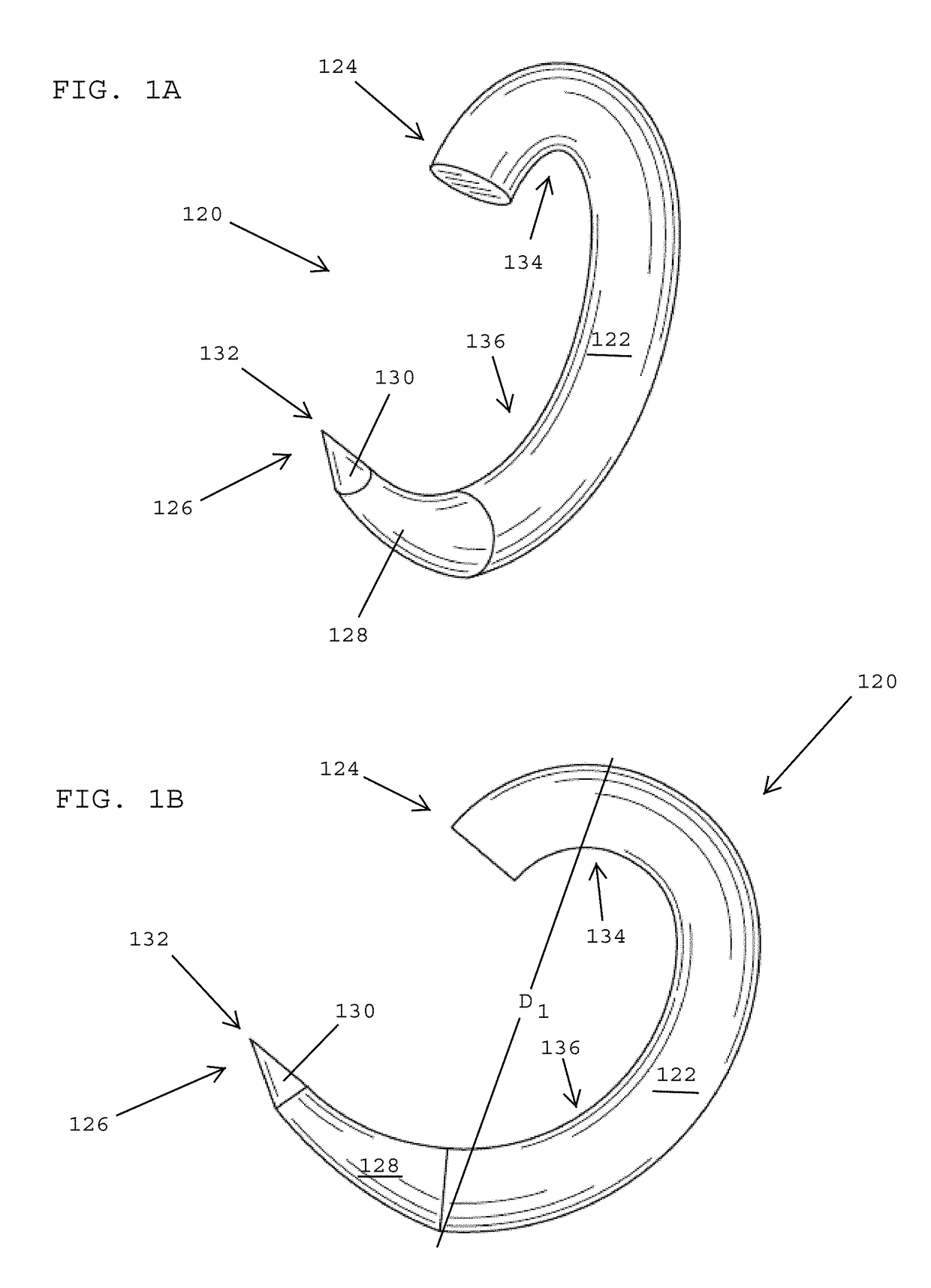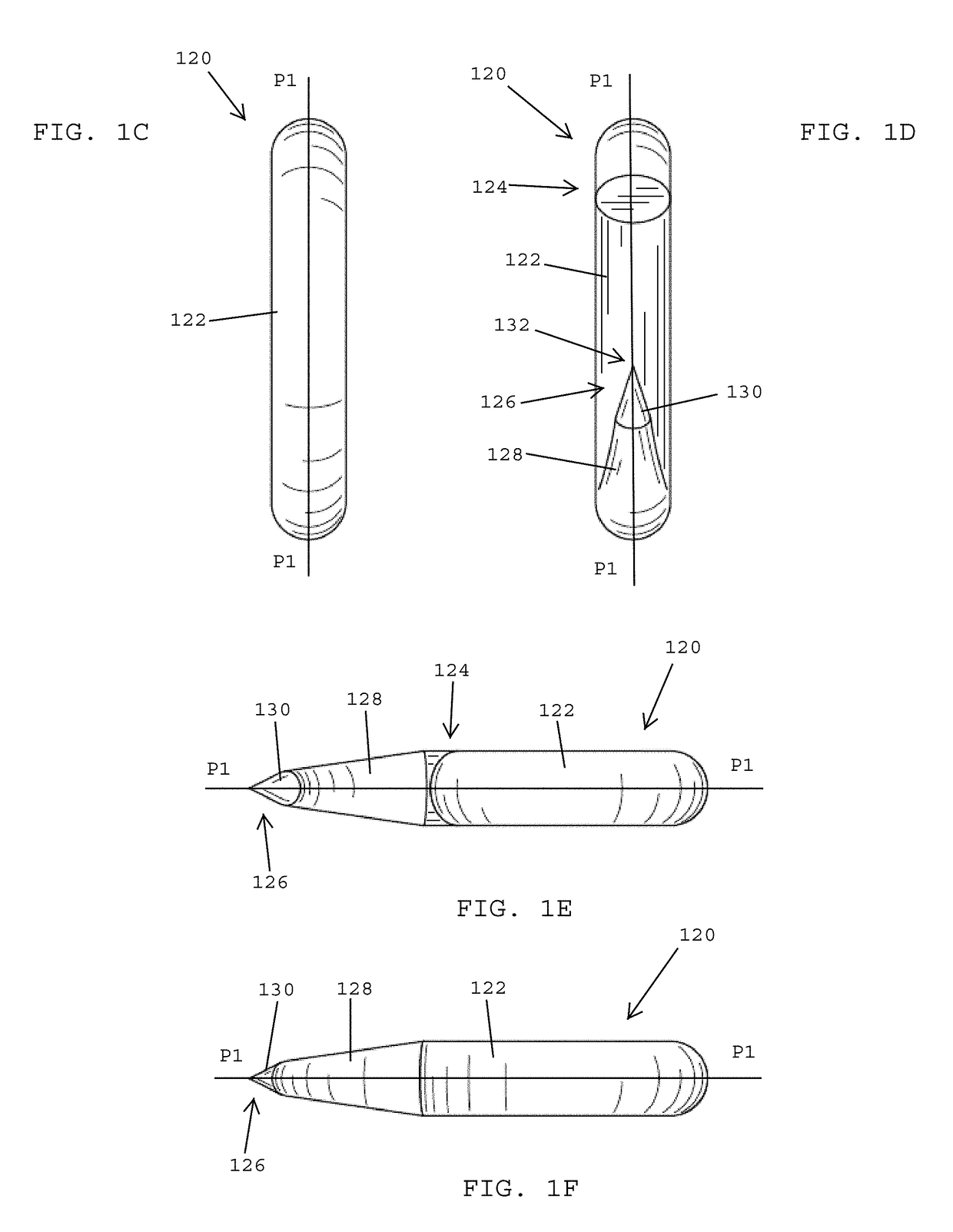Curved surgical fasteners for securing prosthetic devices to tissue
a prosthetic device and surgical technology, applied in the field of surgical fasteners, can solve the problems of reducing lifting ability, bowel impaction, and suturing is not preferred, and achieve the effect of reducing the difficulty of lifting
- Summary
- Abstract
- Description
- Claims
- Application Information
AI Technical Summary
Benefits of technology
Problems solved by technology
Method used
Image
Examples
Embodiment Construction
[0086]Referring to FIGS. 1A-1F, in one embodiment, a curved surgical fastener 120 preferably includes a curved member 122 having a proximal end 124 and a distal end 126. The curved surgical fastener 120 desirably includes a tissue penetrating end 28 located at the distal-most end of the curved member 122. The tissue penetrating end 128 is preferably tapered. In one embodiment, the tissue penetrating end 128 is curved. A distal end of the tissue penetrating end 128 preferably includes an insertion tip 130 having a distal point 132 that facilitates insertion of the tissue penetrating end 128 of the curved member 122 into tissue.
[0087]Referring to FIGS. 1A and 1B, in one embodiment, the curved member 122 has a total curvature between the proximal end 124 and the distal end 126 of less than 360 degrees. In one embodiment, the curved member 122 preferably forms a compound curve. As used herein, the terminology compound curve defines a curve made up of two or more circular arcs of success...
PUM
 Login to View More
Login to View More Abstract
Description
Claims
Application Information
 Login to View More
Login to View More - R&D
- Intellectual Property
- Life Sciences
- Materials
- Tech Scout
- Unparalleled Data Quality
- Higher Quality Content
- 60% Fewer Hallucinations
Browse by: Latest US Patents, China's latest patents, Technical Efficacy Thesaurus, Application Domain, Technology Topic, Popular Technical Reports.
© 2025 PatSnap. All rights reserved.Legal|Privacy policy|Modern Slavery Act Transparency Statement|Sitemap|About US| Contact US: help@patsnap.com



